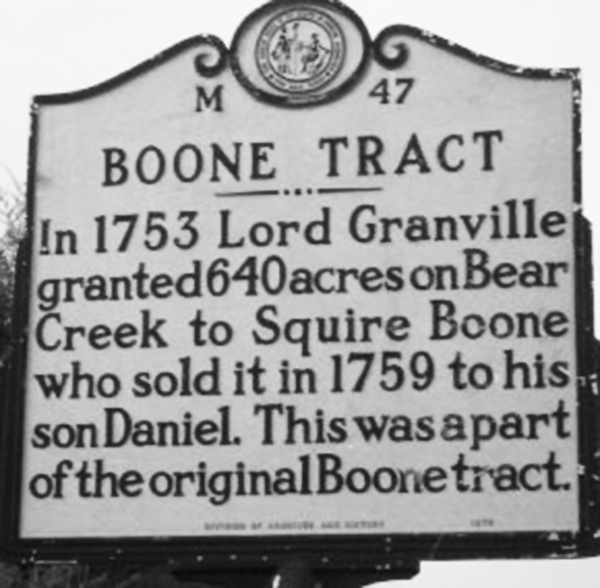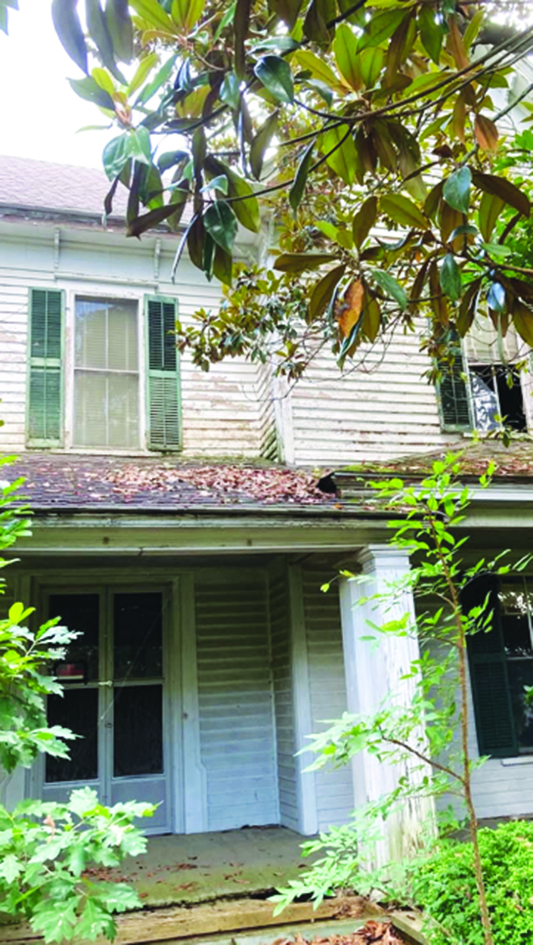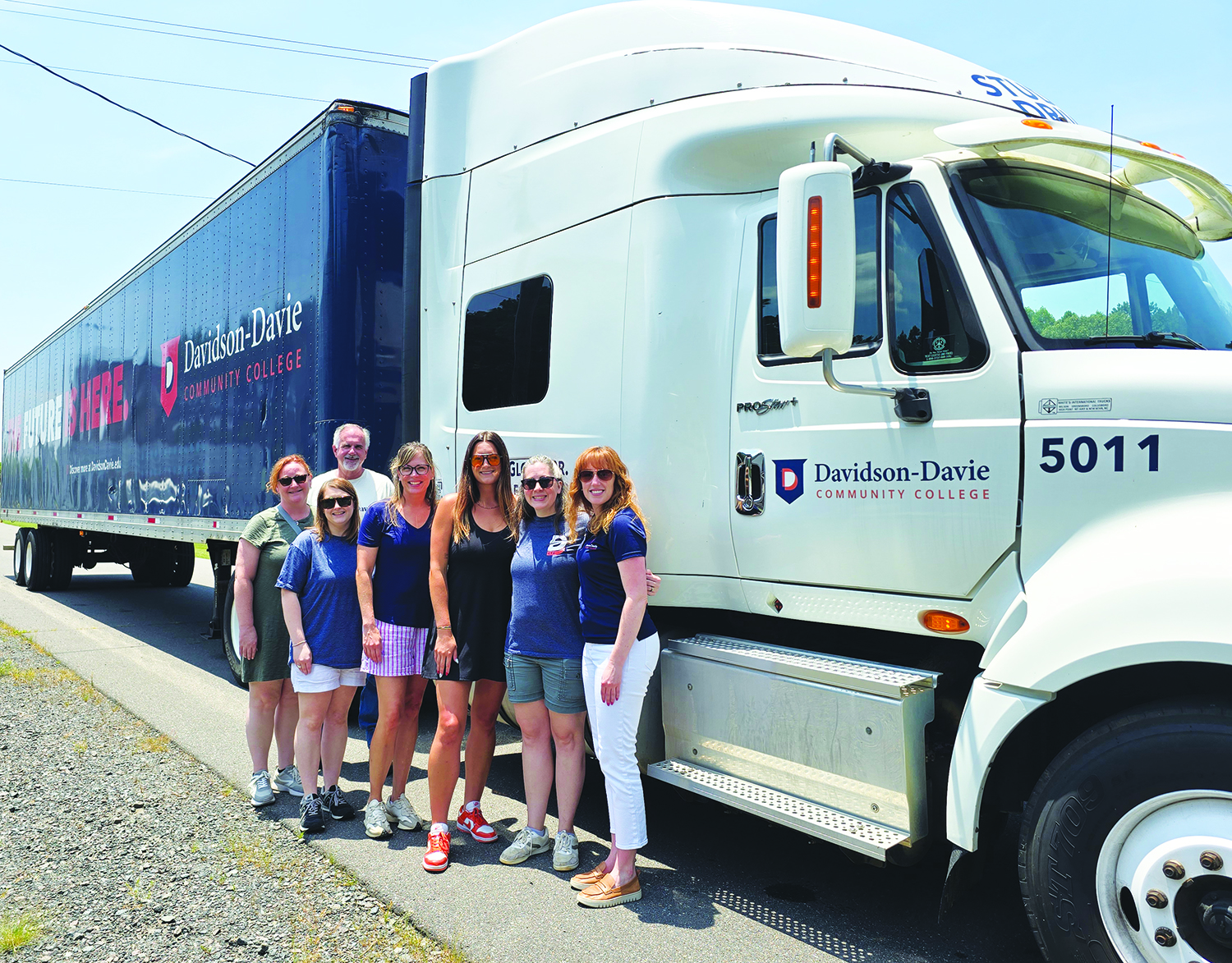The Literary Corner: Renegade Writer’s Guild
Published 11:07 am Tuesday, May 13, 2025

- The Boone land grant marker on US 64 West, Mocksville.
|
Getting your Trinity Audio player ready...
|
The Boone Connection
By Linda H. Barnette
Many people in our area are interested in the Boone family because we all know that Squire and Sarah Boone came to what is now Davie County in the mid-1700’s, raised their children here, and are buried at Joppa Cemetery. And everybody knows about their famous son, Daniel, the explorer.
While I am not directly related to Daniel, I do have some connections to his family. We know that Squire’s brother John was the keeper of the family history, writing down all of the marriages, births, and deaths. This John never married.
The other John who came here with Squire was his nephew, John, son of his brother Benjamin and his wife, Ann Farmer. Ann died young, so young John went to live with his uncle Daniel and his family. He eventually married a girl named Rebecca, probably a Rebecca Bryan, but her name does not appear on any papers.
It is through the second John that my connection comes. John, nephew of Squire and cousin of Daniel, had a daughter named Hannah who married James Penry. In turn, Joel Penry, son of Samuel Penry, married Ursula Dwiggins, the daughter of my 4th great-grandparents Daniel and Ursula Dwiggins. They are all 4 buried in the original Dwiggins Family Cemetery on Boone Farm Road. Also, Hannah Boone Penry’s son was the first person buried at Center Methodist Cemetery.
The other connection is the marker on what is now the area of Hwy 64 near Center that attests to Squire Boone’s Granville land grant for 640 acres in that area. John Boone also bought a Granville grant for 630 acres, which was about a mile or so above Squire’s land near what is now Godbey Road.
When John Boone died in 1803, his estate was handled by his son, John, Jr, who sold the land. Part of it was bought by my 4th great-grandfather, Daniel Dwiggins. My grandmother, Blanche Dwiggins Smith, had the 2 original deeds that were signed by John Boone and the Penry brothers in 1813. They are both safely stored in the vault at the Davie County Public Library.
Two Step
By E. Bishop
The two step dance is said to be the easiest to learn. It is really as simple as stepping from side to side to the beat of the music. Too bad that isn’t so when you are informed you need to do the two step authentication code for your online Social Security account. Log ins, passwords etc. need to be updated to make things safer and you can’t just use one code for everything.
Recently I decided it was time to update all of our accounts, do the two-step, on retirement, bank accounts and Social Security for both of us. The intimidation, fear of making mistakes and frustration is real. Let me tell you, the Social Security interaction did not go well from the very beginning. I was almost to the point of throwing my hands up in frustration and giving up. I had to make the call. The first time calling was going to be a forty minute wait (on Friday) so I thought I would wait until maybe Tuesday when it might not be as busy. On Tuesday, it was going to be an hour and 40 minute wait for them to return my call. Then, unaware of all the facts I needed to authenticate who I was took time. What an ordeal that was! But, I’m authentic now (I think).
Technology changes so quickly, it is no wonder a lot of people have trouble keeping up. I don’t think it is necessarily all older people either that have trouble. However, as we age, it is more of a struggle because of physical, cognitive and experiential circumstances. The dexterity, brain changes and the ability to learn new concepts and programs influences the ability of older adults to keep up. It’s easy to get confused with tech jargon and concepts unless you are immersed in it almost daily.
Instead of throwing up hands in frustration, maybe older adults need to campaign for better user friendly designs. In a recent study published in JMIR Aging, it is pointed out that “the complexity of user interfaces and the lack of ‘user-friendly’ designs can make it difficult for older adults to navigate and use digital technologies effectively.” No kidding!
There is good news however – not all technology is created equal. Some like Jubilee TV are specifically designed for older adults in mind. The article I read states that a focus on essential functions like video calls and the ability to control the TV remotely allow family to help without taking away the older person’s autonomy. That’s good, but I say more still needs to be done.
Seniors need a combination of support and assistance to maintain a good quality of life – have get togethers with friends, volunteer, get out and exercise, accept that aging is a natural part of life, do that continuing education class in technology or maybe get a partner and do the two-step. I just hope it’s not for authentication purposes.
Two-Edged Swords – er, Strengths
By Felicia Browell
I’ve said it before – I’m a lifelong learner. I love to learn about anything that interests me. I love to “ideate” – I am fascinated with ideas – I actually sort of collect them, then spend time trying to put them together like puzzle pieces in my head. I’m also rated high in “futuristic” which means I say “What if …” a lot. Ideation and futuristic and learner are three of my top strengths.
I have a few strengths and many weaknesses. These things often have the same names.
A futuristic ideator who loves to learn … this can lead to some really great innovations. But those make the most difference when you can DO something with them. If you work for someone besides yourself, and if the ideas are welcomed – hooray! New and wonderful things can happen. When those ideas aren’t welcome – all sorts of conflicts happen.
Have you ever taken a strengths assessment? There are several free assessments available online – they tell you areas or themes in which you are particularly talented, usually areas where you are a “natural.” Understanding your strengths can give you ah-ha moments, and explain why you love certain hobbies, tasks, or jobs. They can also help you understand why you struggle with certain rules, or why you dislike working with certain people. Everyone has some element of many strengths. When you have a strong tendency toward one strength or characteristic, but someone you work or interact with has less talent at the same characteristic, that can lead to some really tough meetings or family interactions.
I think change is good when it leads to positive improvements. I believe everyone should work faster, more efficiently, at less cost, with higher quality results. I seriously have difficulty understanding why everyone doesn’t try to do this. Some of my previous colleagues invariably did just enough to get the project off their desk, creating the “minimum viable product.” It was just functional enough to get it out the door. It was just good enough. Even the phrase “good enough” raises my hackles! If you don’t have time to do it right, when will you have time to do it over? That product was just NOT going to produce the results we needed.
Working with people who resisted improvements really frustrated me. “You want change for change’s sake” and “quit trying to change everything” were comments I heard from several coworkers at least twice a year. My response was typically “Don’t you want higher quality, faster, with less effort? You’ll have that after we get used to the new process.”
A few people understood. But many – including some department managers – objected to the changes I suggested not because I was wrong, but because the people who were dug in like ticks on a coyote would simply not change how or what they did. Change requires effort and willingness and commitment. My innovative ideas became my weakness in the team.
All of this applies to general life, too, not just careers or jobs. If what you love is the opposite of what your partner loves, you need to be really good at compromise, planning, and tolerance. For me, housekeeping is a low priority – my dishes are clean, but my counters are cluttered. If I lived with a neat freak, one of us would go crazy. I’ve seen marriages dissolve because one partner needed affirmations every day, while their partner was completely oblivious, but needed to receive gifts regularly. That brings us back to communication again. Especially in relationships – business or personal – you need to be aware of and respect the differences between people and how they think and behave. It helps if you don’t just complain that the other person doesn’t recognize your needs or strengths; you should actually speak up and say “hey, I’m really good at keeping the kitchen tidy. I know you hate doing it. If you cook three meals a week, I’ll keep it clean all seven days.” Don’t know how to cook? For the sake of the relationship – there’s YouTube, Instagram, and Pinterest!
Communication, compromise, respect, tolerance, and awareness (of yourself and others) can help you use your strengths while keeping those strengths from becoming weaknesses and shredding relationships. What are your strengths? Are you shredding relationships by hammering friends and family with those strengths? Find an online assessment and see what it says. Then ask the people in your life to do an assessment too – what you learn might surprise you both.





